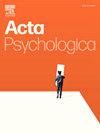Translation, psychometric evaluation, and network analysis of the parental acceptance and action questionnaire (PAAQ) among Arab parents of children with and without specific learning disability (dyslexia)
IF 2.1
4区 心理学
Q2 PSYCHOLOGY, EXPERIMENTAL
引用次数: 0
Abstract
Objective
The current study evaluated psychometric properties and network analysis of the Parental Acceptance and Action Questionnaire (PAAQ) among Arab parents of children with and without dyslexia.
Method
419 parents of community sample children and 318 parents of children with dyslexia (CWD) completed the PAAQ, Interpersonal Mindfulness Scale (IMS), and a socio-demographic checklist. Exploratory Graph Analysis (EGA), Confirmatory Factor Analysis (CFA), and Exploratory Factor Analysis (EFA) were used to determine the factor structure of the PAAQ. Cronbach's alpha was used to estimate internal consistency. Finally, the centrality measures are derived from network theory (betweenness, closeness, and strength).
Results
In both community and CWD samples, the author identified similar factor structures encompassing three dimensions: proactive behavior and adaptability in parenting, acceptance of personal parenting-related inner experiences, and acceptance of the child's negative inner experiences. Item 18 was removed due to poor factor loading in both samples, resulting in a final version of the PAAQ with 18 items (instead of 19 items). This factor structure was revealed through EFA analysis and confirmed by CFA and GFA, demonstrating the scale's consistency. For all subscales in both samples, Cronbach's alpha was more significant than 0.7, indicating suitable internal consistency. Regarding centrality, both the community and dyslexia groups had similar centrality measures in some items. However, the dyslexia group generally showed higher betweenness values than the community group in several items (e.g., PAAQ.6, PAAQ.7).
Conclusion
The PAAQ is a suitable scale for use with Arabic parents, including community samples and parents of children with dyslexia.
求助全文
约1分钟内获得全文
求助全文
来源期刊

Acta Psychologica
PSYCHOLOGY, EXPERIMENTAL-
CiteScore
3.00
自引率
5.60%
发文量
274
审稿时长
36 weeks
期刊介绍:
Acta Psychologica publishes original articles and extended reviews on selected books in any area of experimental psychology. The focus of the Journal is on empirical studies and evaluative review articles that increase the theoretical understanding of human capabilities.
 求助内容:
求助内容: 应助结果提醒方式:
应助结果提醒方式:


